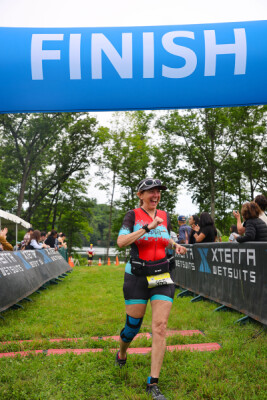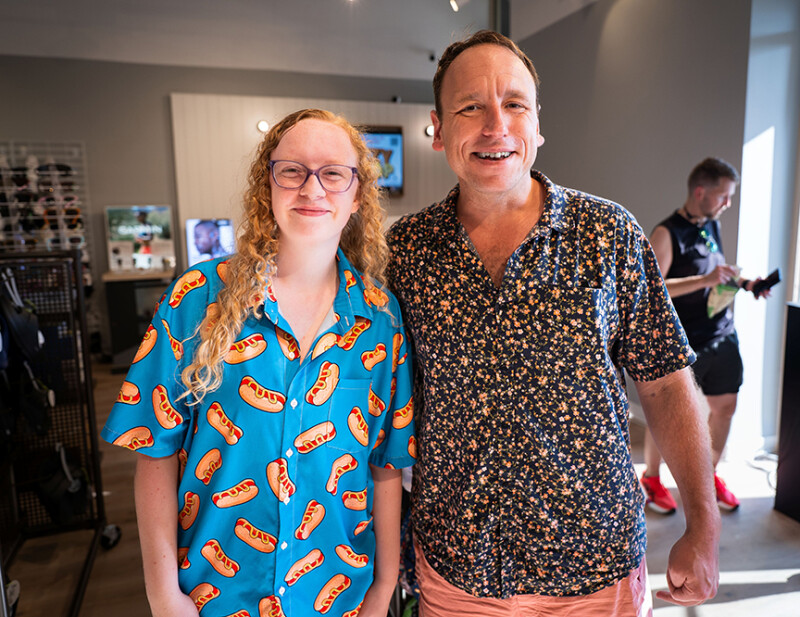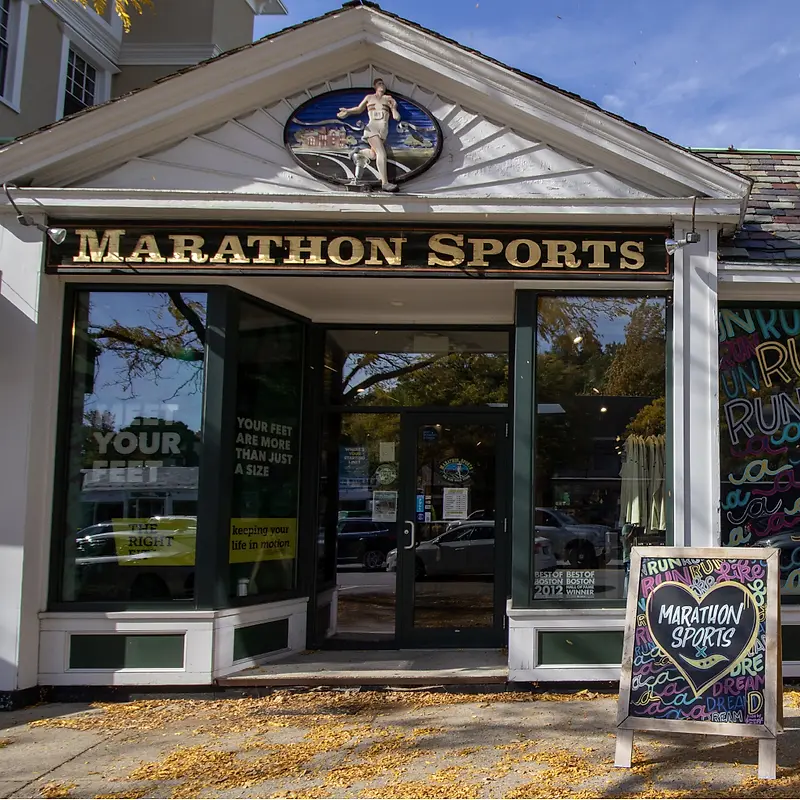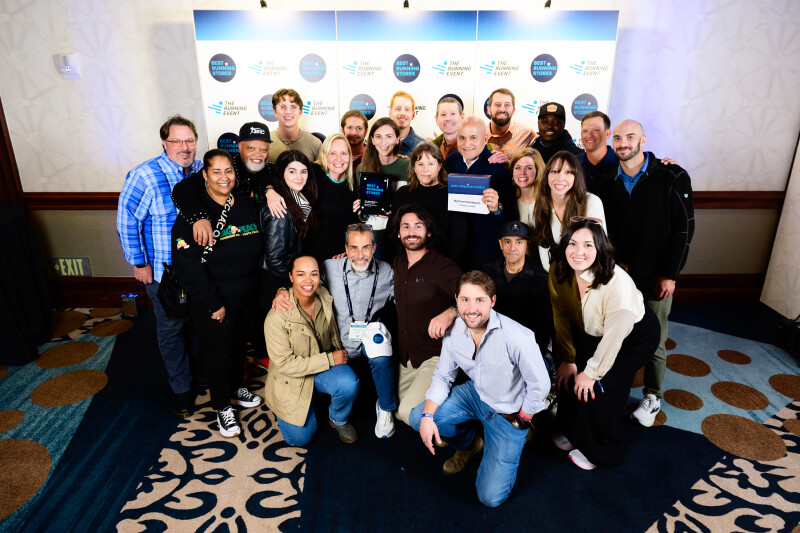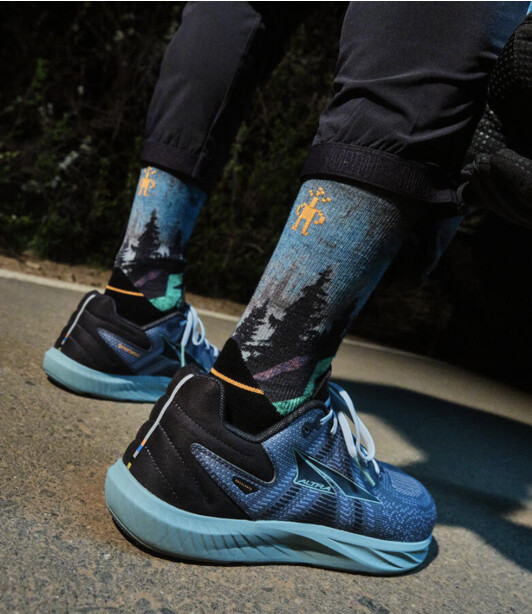Istarted running at age 48. I had never been a runner before that. For years, I enjoyed running at least three days a week and racing maybe a dozen times a year.
Then at the Brooklyn Half Marathon, my life changed. My friend and I decided to try a triathlon for the first time. She no longer wanted to compete in running races. Like many runners who have completed half marathons and full marathons, I was looking for a new challenge.
Looking for a new challenge is why many runners try out a triathlon. And that is why it might be wise for run specialty retailers to diversify their offerings for this new type of athlete. Run retailers are uniquely positioned to be an essential resource for their journey — at the same time, building loyalty and creating new revenue streams for a dedicated, passionate – sometimes crazy – triathlon consumer.
To effectively serve this demographic, retailers first need to understand what motivates them. Runners are typically disciplined, goal-oriented and accustomed to structured training. However, transitioning into triathlons introduces new factors and potential challenges.
Runners are drawn to triathlons for several reasons: the thrill of a new physical and mental challenge, the benefit of cross-training to reduce the risk of running injuries and the vibrant, supportive community that promotes the sport.
In my upcoming book, “Unlocking the Triathlon: A Beginner’s Guide to Competing in a Triathlon” (Meyer & Meyer Sports, November 2025), I examine this transition from runner to triathlete. I also spoke with a professional triathlete who shared her experience with the Olympic trials for running, where she encountered frequent injuries. By switching from running events to a triathlon, she eliminated those injuries and was able to run more effectively.
There is a strong overlap between the running and triathlon communities. Many triathletes are “runners who learned to swim and bike,” since running is one of the most accessible endurance sports. I was one of them.
While most runners have their running leg covered, the swim and bike sections can feel intimidating. They often have questions about everything from swimming techniques and open-water nerves to cycling efficiency and complex gear.
Your role as a retailer is to educate and guide. You can clarify the process by recognizing their running expertise while offering a clear, supportive path into the other two disciplines.
Empathy is key. By understanding their concerns and providing practical solutions, you foster the trust needed to become their reliable resource. Here are some steps to take to be that resource.
1. Building the Right Product Mix
A runner’s gear closet looks quite different from a triathlete’s closet. Guiding this transition involves stocking the right products and, more importantly, being able to explain the “why” behind each item. Your inventory should be a carefully chosen collection that meets the specific needs of a beginner triathlete.
2. Footwear: More Than Just Running Shoes
While they already have their favorite running shoes, new triathletes will need cycling-specific footwear. Explain the benefits of cycling cleats and clipless pedals for better power transfer and efficiency. Consider offering entry-level to mid-range options and think about hosting a “Clipping In/Out” clinic to help ease their fears.
3. Apparel: The All-in-One Solution
If stocking bike cleats and bike shoes is out of budget, at the very least introduce them to triathlon-specific apparel. A tri-suit is often a revelation for newcomers. Explain how these garments are designed to be worn for all three disciplines, with a quick-drying chamois that offers comfort on the bike without feeling bulky during the run.
Consider offering store-branded race kits and jackets. These items not only fill the gap, but also promote your store’s identity within the triathlon community. One of the local running shops on Long Island, NY, where I live, provides team gear and has strong branding at local triathlon races.
4. Accessories: The Small Things That Make a Big Difference
The list of accessories may seem endless, so prioritize the essentials first. This includes:
• Swim – goggles (with different tints for pool and open water), swim caps and anti-chafing balm.
• Bike Essentials – helmets (a mandatory safety item), hydration systems (bottle cages or aerodynamic bottles), a basic bike repair kit and a floor pump.
• Transitions – a race belt for easy attachment of their number and quick-tie elastic laces for their running shoes to save valuable seconds in transition.
5. Tech Gear: Tracking Progress Across Three Sports
Many runners already use a GPS watch, but they may need to upgrade to a multi-sport model. Highlight watches that can seamlessly track swim, bike and run activities, offering features such as open-water swim tracking and heart rate monitoring. As they progress, you can introduce more advanced tech like cycling power meters and smart trainers.
6. Creating a Triathlon-Friendly In-Store Experience
Your physical store should be a welcoming environment that builds confidence. It’s about creating experiences that educate and connect, turning your four walls into a community hub for aspiring triathletes.
7. Evolve Your Run Club
Your current run club is an excellent starting point. Broaden its scope to include triathlon-related activities. Collaborate with a local swim coach to host a series of clinics at a nearby pool or set up a weekly group bike ride on a safe, beginner-friendly route. These “brick” workouts – biking immediately followed by running – are a key part of triathlon training and a great way to foster a sense of community.
8. Have a Few Triathlon Books in Your Store
If you already have some running-related books that you sell in your store, consider adding a few triathlon-related books, such as “Unlocking the Triathlon: A Beginner’s Guide to Competing in a Triathlon,” published by Meyer & Meyer Sport. There are many excellent running and triathlon books that you might consider stocking in your shop.
9. Host Workshops and Clinics
Consider finding a local triathlon coach or an expert. In 2026, I will be speaking at several running stores, including Runner’s Roost in Colorado and the Runner’s Edge in Huntington, Long Island. Topics could include:
• Triathlon 101. Covering the basics of race day, nutrition and training.
• Transition Clinic. Create a simulated transition zone in your store or parking lot and teach athletes how to smoothly move from swim to bike and bike to run.
• Basic Bike Maintenance. Teach them how to fix a flat tire, clean their chain and perform simple pre-ride safety checks.
10. Invest in Expert Staff
Make sure your team can handle triathlon-related questions. Consider providing training for your staff or, better yet, hiring someone with triathlon experience. When a customer asks about wetsuit fit or bike sizing, having a knowledgeable staff member who has “been there” offers immediate credibility and fosters strong trust. (Even if you don’t sell these products in-house, offering that expertise is good customer service.)
11. Building Community and Loyalty
The shift to triathlon focuses equally on community and gear. Retailers who effectively nurture this feeling of belonging build lifelong customers.
12. Sponsor and Support Local Events
Get involved in the local triathlon scene. Sponsor a beginner-friendly sprint triathlon or have a presence at the race expo for larger events. Simply being there to cheer on your customers can make a huge difference. This shows you are invested in their success beyond the initial sale.
13. Engage on Social Media
Use your social media channels to become a source of information and inspiration. Share training tips, celebrate customer race finishes (with their permission) and post videos explaining different pieces of gear. Create a Facebook group for your store’s “tri-club” where members can ask questions, organize group workouts, and share their progress.
14. Feature Customer Stories
Highlight stories of community runners who have finished their first triathlon. Share their experiences on your blog or social media. This genuine content is highly motivating for others starting out and strengthens your store’s role as a key part of their journey.
In my new book, “Unlocking the Triathlon,” I share stories from dozens of first-time triathletes, including both professional and age-group athletes. They are all inspiring and will motivate your runners to try out a triathlon.
The Business Opportunity for Retailers
Supporting the transition from runner to triathlete isn’t just beneficial for the community. It’s also great for business. These athletes tend to have a higher lifetime value than those who stick to a single sport. A runner might purchase one or two pairs of shoes annually, but a triathlete requires gear for three different sports, as well as nutrition, accessories and tech.
By becoming a trusted resource, you foster long-term loyalty that goes beyond price. These athletes will return to your store for advice, service and upgrades. You also establish your brand as a forward-thinking leader in the endurance sports market.
As the popularity of triathlons continues to rise, your store will be ideally positioned to meet the demand, equipped with the right products, knowledge and community to turn running shoe customers into triathlon champions.
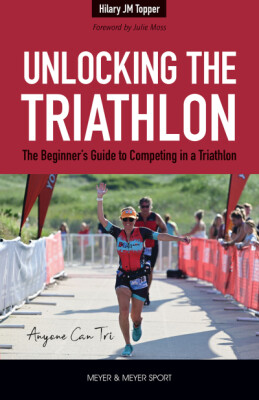
About the author:
Hilary JM Topper, MPA, is a USA Triathlon Coach Level 1, USMS Swim Coach Level 3, WOWSA Open Water Swim Coach, and RRCA Run Coach Level 1. She actively blogs on ATriathletesDiary.com and maintains a lifestyle blog at HilaryTopper.com. Her first book, “From Couch Potato to Endurance Athlete – A Portrait of a Non-Athletic Triathlete,” was published by Meyer & Meyer Sports in 2022. Her upcoming book, “Unlocking the Triathlon: A Beginner’s Guide to Competing in a Triathlon,” will be released in November, 2025, during which she will tour various cities across the country promoting it. For questions or to invite Hilary for a presentation at your store, contact her via email at [email protected] or call 516-220-3110.
